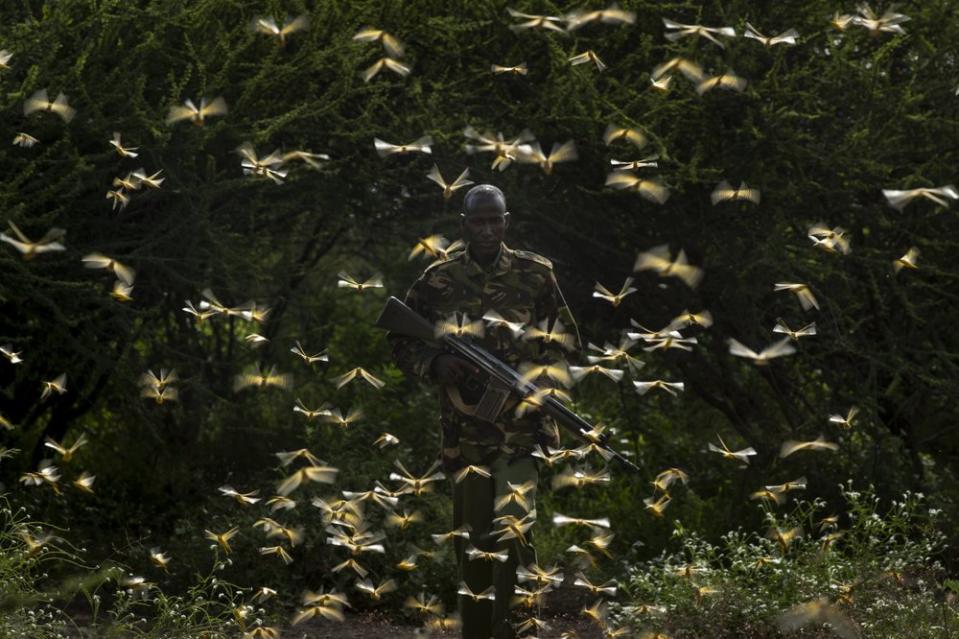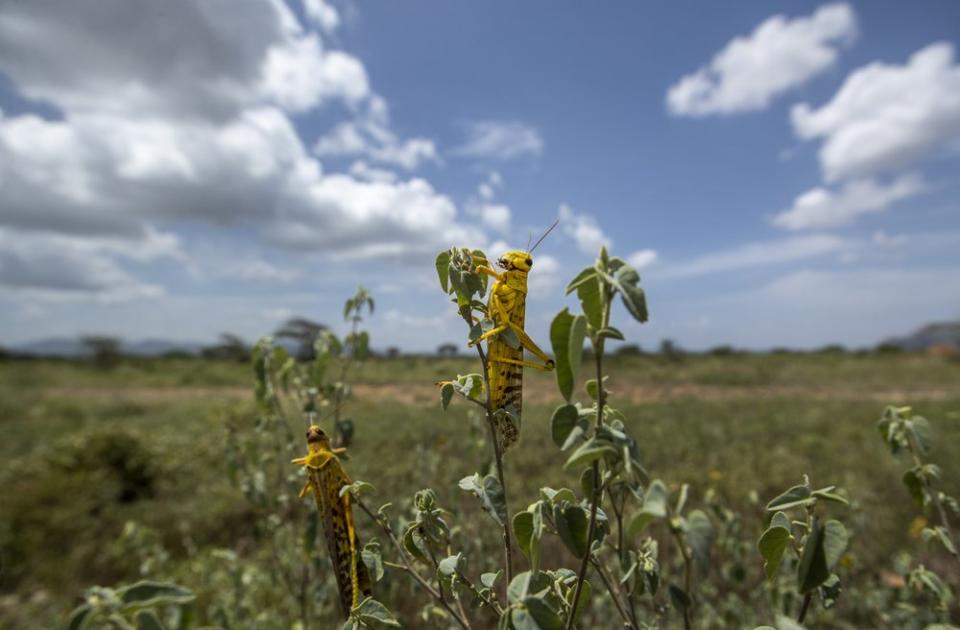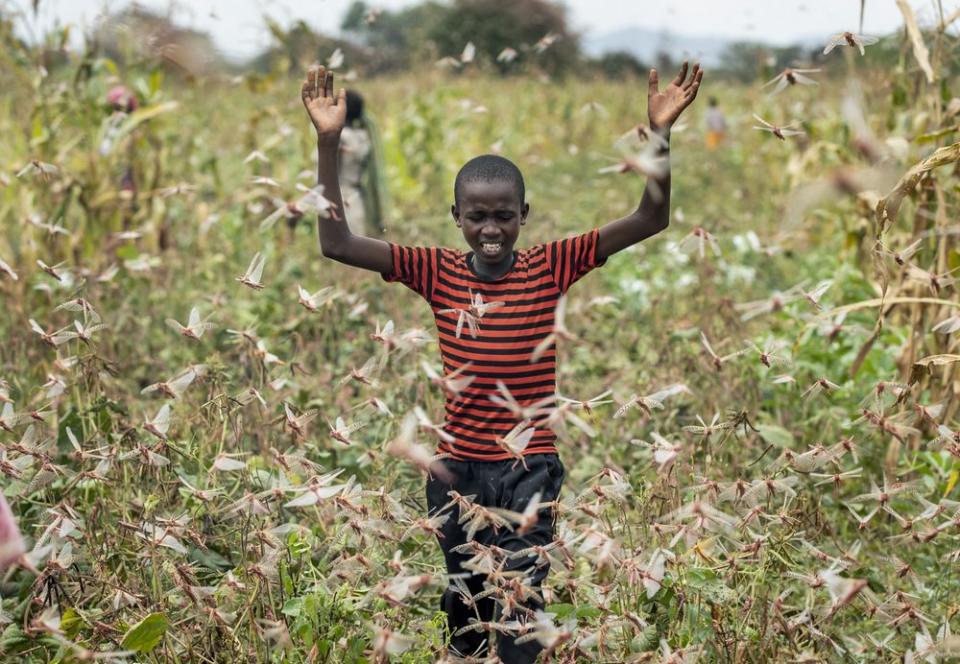The 'triple threat' putting millions at risk in region hard hit by coronavirus
Locusts, COVID-19 and deadly flooding pose a "triple threat" to millions of people across East Africa, with the World Bank announcing a US$500 million (A$762.3 million) program for countries affected by the historic desert locust swarms.
A new and larger generation of the voracious insects, numbering in the billions, is on the move in East Africa, where some countries haven't seen such an outbreak in 70 years.
Climate change is in part to blame.
The added threat of COVID-19 imperils in a region that already was home to about 20 per cent of the world's population of food-insecure people, including millions in South Sudan and Somalia.

Yemen in the nearby Arabian Peninsula is also threatened, and United Nations officials warn that if locusts are not brought under control there, the conflict-hit country will remain a reservoir for further infestations in the region.
Lockdowns imposed for the COVID-19 pandemic have slowed efforts to combat the locusts, especially imports of the pesticides needed for aerial spraying that is called the only effective control.
"We're not in a plague, but if there are good rains in the summer and unsuccessful control operations, we could be in a plague by the end of this year," Keith Cressman, senior locust forecasting officer with the United Nations Food and Agriculture Organisation (FAO), said.

He later told a UN briefing in New York that "the locust invasion is most serious now in Kenya, Somalia and Ethiopia" and is also "very serious in southern Iran and in parts of Pakistan".
Starting in June, Mr Cressman said, the locusts will move "from Kenya to throughout Ethiopia as well as to Sudan, perhaps West Africa" and the swarms in southern Iran and southwestern Pakistan "will move to India and Pakistan in the border areas."
He said the latter "could be supplemented by other swarms coming from East Africa, or coming from northern Somalia".
He said the FAO is appealing for tens of millions of dollars of additional funds for operations in Kenya, Somalia and Ethiopia that will now be extended to Yemen, Iran, to Pakistan and if need be to West Africa.
In West Africa, he said, there's a risk that the locusts could make their way in the coming months into the sprawling and arid Sahel region just south of the Sahara Desert, he said.
Chad, Niger and Mauritania could be affected - another burden for a region under growing threat from extremist attacks.
The FAO is preparing to increase its appeal for aid to US$310 million (A$472.6 million) as the livelihoods of millions of people across Ethiopia, Kenya and elsewhere are at stake, including farmers and herders.

Already about 400,000 hectares of land have been protected from the locusts, or enough crops to feed about five million people, said Dominique Burgeon, FAO's director of emergencies, "but it is only one part of the equation".
The number of locusts continues to grow despite the control efforts, and if that work is not sustained, the combined threat with COVID-19 and flooding "could have a catastrophic effect," FAO director-general Qu Dongyu said.
The FAO in its latest assessment says the situation in parts of East Africa remains "extremely alarming" because new swarms will form from mid-June onward, coinciding with the start of the harvest season for many farmers.
The World Bank's new US$500 million (A$762.3 million) program will benefit affected countries in Africa and the Middle East, and Uganda, Kenya, Djibouti and Ethiopia benefit from an initial disbursement of US$160 million (A$243.9 million).
Some of the money will go directly to farmers as cash payments. Plans to help Yemen and Somalia are at an "advanced stage," the bank said.

"This food supply emergency combined with the pandemic and economic shutdown in advanced economies places some of the world's poorest and most vulnerable people at even greater risk," World Bank Group president David Malpass said in a statement.
The recent floods in parts of East Africa have killed nearly 300 people and displaced 500,000, slowing locust control work and increasing the risk of the virus' spread, according to the International Federation of Red Cross and Red Crescent Societies.
"We are facing an unusually complex humanitarian situation," Simon Missiri, the group's Africa director, said in a statement.
Do you have a story tip? Email: newsroomau@yahoonews.com.
You can also follow us on Facebook, Instagram and Twitter and download the Yahoo News app from the App Store or Google Play.




